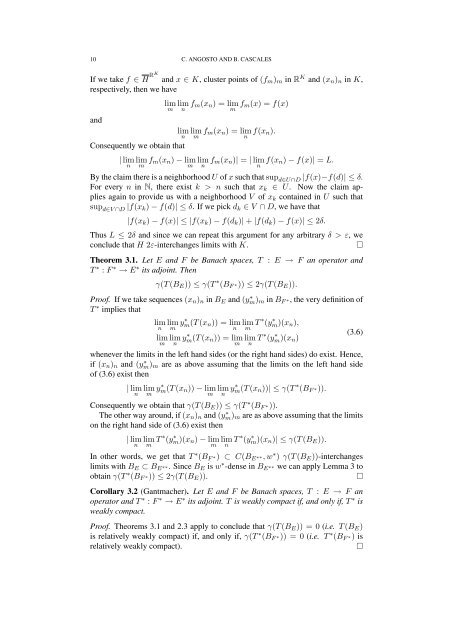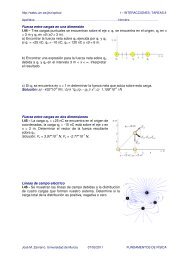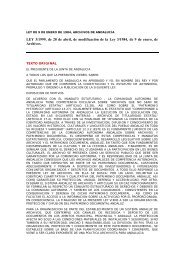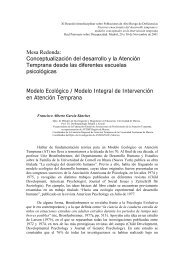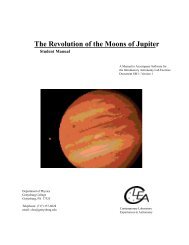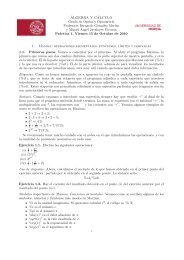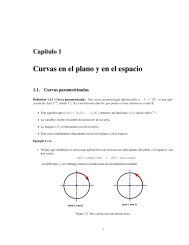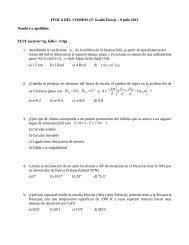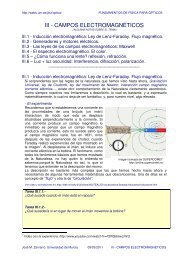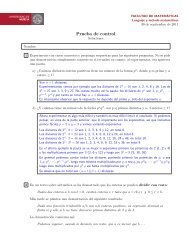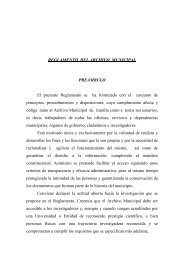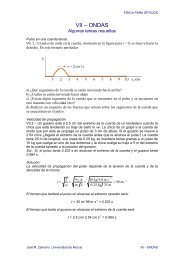MEASURES OF WEAK NONCOMPACTNESS IN BANACH SPACES ...
MEASURES OF WEAK NONCOMPACTNESS IN BANACH SPACES ...
MEASURES OF WEAK NONCOMPACTNESS IN BANACH SPACES ...
Create successful ePaper yourself
Turn your PDF publications into a flip-book with our unique Google optimized e-Paper software.
10 C. ANGOSTO AND B. CASCALES<br />
If we take f ∈ H RK and x ∈ K, cluster points of (f m ) m in R K and (x n ) n in K,<br />
respectively, then we have<br />
and<br />
lim<br />
m<br />
lim<br />
n<br />
Consequently we obtain that<br />
f m (x n ) = lim<br />
m<br />
f m (x) = f(x)<br />
lim<br />
n<br />
lim<br />
m<br />
f m (x n ) = lim<br />
n<br />
f(x n ).<br />
| lim<br />
n<br />
lim<br />
m<br />
f m (x n ) − lim<br />
m<br />
lim<br />
n<br />
f m (x n )| = | lim<br />
n<br />
f(x n ) − f(x)| = L.<br />
By the claim there is a neighborhood U of x such that sup d∈U∩D |f(x)−f(d)| ≤ δ.<br />
For every n in N, there exist k > n such that x k ∈ U. Now the claim applies<br />
again to provide us with a neighborhood V of x k contained in U such that<br />
sup d∈V ∩D |f(x k ) − f(d)| ≤ δ. If we pick d k ∈ V ∩ D, we have that<br />
|f(x k ) − f(x)| ≤ |f(x k ) − f(d k )| + |f(d k ) − f(x)| ≤ 2δ.<br />
Thus L ≤ 2δ and since we can repeat this argument for any arbitrary δ > ε, we<br />
conclude that H 2ε-interchanges limits with K.<br />
□<br />
Theorem 3.1. Let E and F be Banach spaces, T : E → F an operator and<br />
T ∗ : F ∗ → E ∗ its adjoint. Then<br />
γ(T (B E )) ≤ γ(T ∗ (B F ∗)) ≤ 2γ(T (B E )).<br />
Proof. If we take sequences (x n ) n in B E and (y ∗ m) m in B F ∗, the very definition of<br />
T ∗ implies that<br />
lim<br />
n<br />
lim<br />
m<br />
y ∗ m(T (x n )) = lim<br />
n<br />
lim<br />
m<br />
T ∗ (y ∗ m)(x n ),<br />
lim<br />
m<br />
lim<br />
n<br />
y ∗ m(T (x n )) = lim<br />
m<br />
lim<br />
n<br />
T ∗ (y ∗ m)(x n )<br />
(3.6)<br />
whenever the limits in the left hand sides (or the right hand sides) do exist. Hence,<br />
if (x n ) n and (y ∗ m) m are as above assuming that the limits on the left hand side<br />
of (3.6) exist then<br />
| lim<br />
n<br />
lim<br />
m<br />
y ∗ m(T (x n )) − lim<br />
m<br />
lim<br />
n<br />
y ∗ m(T (x n ))| ≤ γ(T ∗ (B F ∗)).<br />
Consequently we obtain that γ(T (B E )) ≤ γ(T ∗ (B F ∗)).<br />
The other way around, if (x n ) n and (y ∗ m) m are as above assuming that the limits<br />
on the right hand side of (3.6) exist then<br />
| lim<br />
n<br />
lim<br />
m<br />
T ∗ (y ∗ m)(x n ) − lim<br />
m<br />
lim<br />
n<br />
T ∗ (y ∗ m)(x n )| ≤ γ(T (B E )).<br />
In other words, we get that T ∗ (B F ∗) ⊂ C(B E ∗∗, w ∗ ) γ(T (B E ))-interchanges<br />
limits with B E ⊂ B E ∗∗. Since B E is w ∗ -dense in B E ∗∗ we can apply Lemma 3 to<br />
obtain γ(T ∗ (B F ∗)) ≤ 2γ(T (B E )).<br />
□<br />
Corollary 3.2 (Gantmacher). Let E and F be Banach spaces, T : E → F an<br />
operator and T ∗ : F ∗ → E ∗ its adjoint. T is weakly compact if, and only if, T ∗ is<br />
weakly compact.<br />
Proof. Theorems 3.1 and 2.3 apply to conclude that γ(T (B E )) = 0 (i.e. T (B E )<br />
is relatively weakly compact) if, and only if, γ(T ∗ (B F ∗)) = 0 (i.e. T ∗ (B F ∗) is<br />
relatively weakly compact).<br />
□


